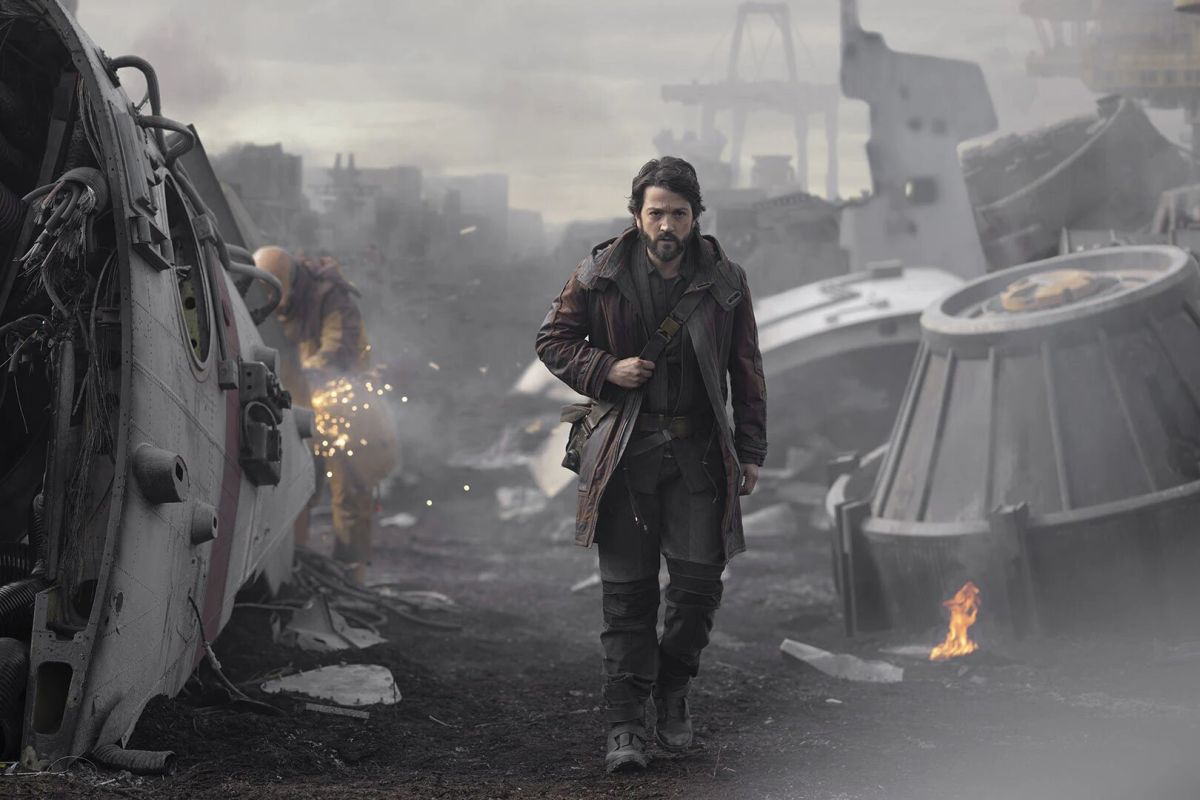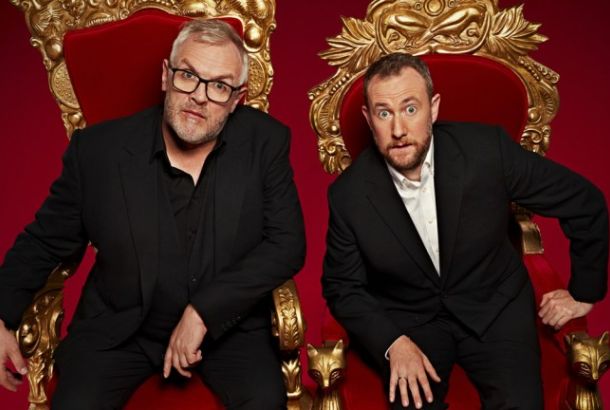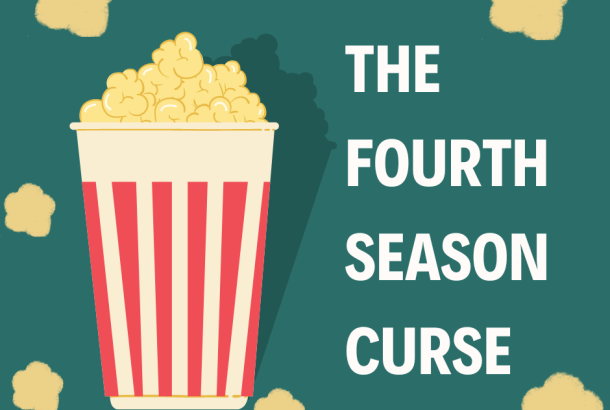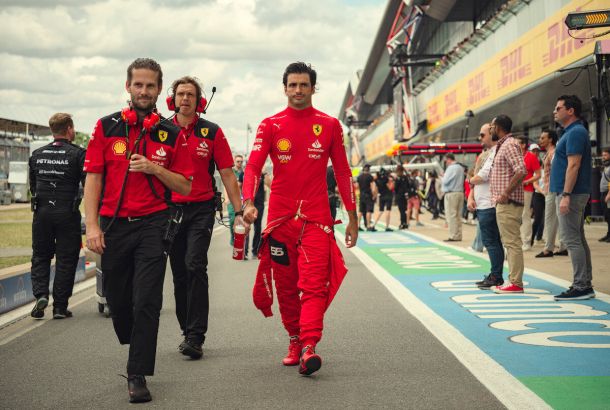Andor review: The best, and most leftist, Star Wars show yet
By Joe McFadden

What does revolution look like? What does it cost? What does it drive people to do?
These questions may sound like something out of a politics tutorial from days gone. A time before education was reduced to a set of box ticking exercises and the simple act of having an opinion wasn’t treated as borderline heresy against a prevailing, stifling orthodoxy of ‘balance’ and ‘objectivity’.
However, they are simply a handful of the key themes and ideas raised in Andor, the Star Wars show from the creatives behind 2016’s Rogue One: A Star Wars Story and the latest in what seems to be a never-ending conveyor belt of Disney+ franchise shows, churned out at a rate that makes even the most dedicated of nerds feel fatigued.
With that in mind, Andor is not only a breath of fresh air from the over-saturated, storytelling-by-corporate-committee status quo, but a compelling human drama that’s equal parts sci-fi spy thriller as it is a televised version of Marxist-Leninism.
Andor follows its titular protagonist, Cassian Andor (Diego Luna), five years before the events of Rogue One, charting how he transforms from a self-interested mercenary to a martyr willing to die for the rebellion. Accompanying Luna is a fantastic ensemble including Stellan Skarsgård, Denise Gough, Fiona Shaw, Genivieve O’Reilly, and Forest Whitaker, to name but a few.
The show itself, consisting of 12 episodes, is roughly split into four story arcs, which build on each other to track Cassian’s evolution into the rebel we know he becomes. The first follows Cassian on his adopted home world Ferrix as he attempts to evade the local authorities after a “misunderstanding” left two corporate security officers dead.
“… but a compelling human drama that’s equal parts sci-fi spy thriller as it is a televised version of Marxist-Leninism”
Released in one block, the first three episodes are a slow burn, introducing audiences to the titular hero and the life he will inevitably leave behind. It’s only with episode three’s climax, a dramatic shoot-out and chase through the streets of Ferrix, that the show really shifts up a gear. However, despite the relatively passive nature of this beginning arc, the show is far from boring, as many fans have (wrongly) decried.
One of Andor’s greatest strengths lies in its world-building. The first three episodes form a fantastic basis for this, grounding not just the first arc, but the series as a whole, in its character driven narratives. Ferrix feels like a real place rather than just a convenient Outer Rim planet to fit Andor into the tapestry of Star Wars canon.
Its design elements, ranging from scrapyards to the run-down, grey colour palette of buildings, all add depth to the location as a declining city, mired in post-industrialisation akin to contemporary Baltimore or even Manchester itself. This sense of physicality is palpable, found in the fact that it was largely shot on location rather than against a green screen or in ILM’s new innovative space The Volume.
2022’s earlier two Star Wars entries, The Book of Boba Fett and Obi-Wan Kenobi, respectively, were notably constrained by The Volume’s limitations. Instead of feeling vibrant and lived-in, their worlds felt small and claustrophobic, a fact which only served to exacerbate the show’s narrative flaws and opened them up to internet ridicule.
The Volume is clearly preferable to the green screens and exploited VFX teams of recent Marvel productions, and is a welcome development in visual effects after the sequel trilogy’s failure to build on Star Wars’ history of innovation (superbly captured by this summer’s documentary series Light & Magic). However, it will still never be an adequate substitute for physical sets and location shoots.
The difference is made all too apparent in Andor’s second arc about a rebel heist on the planet Aldanhi. Filmed on location in the Scottish highlands, the ruggedness of the landscape offers a gritty, windswept honesty to the gruelling conditions faced by the small team of guerrillas. Sheltering in makeshift camps and hiding from patrols of TIE fighters makes their struggle feel all the more authentic as they attempt to blend into the natural world around them. Indeed, when taken out of context the rebel cell resembles the IRA flying column from Ken Loach’s Palme d’Or winner The Wind That Shakes the Barley (2006) more than it does the rebels of the original trilogy.

Photo: StarWars.com
Andor’s Aldhani arc ends with a visually stunning, yet fittingly tragic set piece that is among the best in Star Wars history, managing to intertwine this with a sharp and focused commentary on colonialism, furthering the show’s leftist message and anti-fascist values.
It’s in this second part of the series that Andor’s most intriguing story thread takes shape. Developing an array of supporting characters including Senator Mon Mothma (Genivieve O’Reilly), Imperial Security Bureau (ISB) Supervisor Dedra Meero (Denise Gough), and rebel-in-disguise Luthen Rael (Stellan Skarsgård), the show foregrounds the intricate political workings behind the evil Empire and emerging rebellion.
Mon Mothma has been a part of Star Wars since 1983’s Return of the Jedi but it is in Andor that she’s finally given her due. Mothma’s storyline is about the building and financing of the rebellion, and what sacrifices must be made in the name of freedom. O’Reilly’s performance (like all the show’s performances) is nothing short of remarkable and the dialogue of her scenes is some of the best put to screen in a genre series since the early days of Game of Thrones.
In stark contrast, ISB Supervisor Dedra Meero is ruthless and reprehensible in her hunt for Andor. She is the perfect foil to Mothma, equally as obsessive but cruel where Mothma is kind. Meero allows showrunner Tony Gilroy to lay bare fascist bureaucracy, showing how oppression is maintained through systems and structures as well as brute force and abhorrent acts of violence.
Since its conception Star Wars has always been – and always will be – a political work. Indeed, it is ludicrous to even suggest that art is apolitical but doubly so for a franchise whose humble beginnings were inspired by World War II, Nazi Germany, and the Vietnam War. Andor’s exploration of these concepts, utilising a more nuanced and ‘adult’ approach, is a welcome deviation from the nostalgia-bait of recent Star Wars projects and the sequel trilogy’s total absence of political messaging.
Seeing Dedra Meero scheme her way to the top of the ISB or Mon Mothma (metaphorically) sacrifice her family for a rebellion that doesn’t even exist yet allows Andor to ask human questions of its characters; it creates drama not from external threats but internal conflicts and, most importantly, gives the story a reason to be told.
“Since its conception Star Wars has always been – and always will be – a political work”
Andor is at its best when these conceptual questions and left-wing values are at the forefront of the series’ mind. In an Emmy-worthy speech of Shakespearean proportions, Luthen Rael, the enigmatic and devious orchestrator behind the rebellion, challenges characters and viewers alike to ponder the sacrifices of rebellion. How far is too far? How can you fight evil without becoming evil yourself? What counts as a necessary sacrifice? Why should we fight?
The third arc, which sees Cassian jailed not for his rebel activities but merely walking down the street, is a not-so-subtle commentary on America’s prison industrial complex and another exploration of the way fascism manifests itself. Fascism doesn’t, and won’t, always come in the form of a planet killing superweapon or genocide, but it comes with marginalising minorities and criminalising even the most peaceful forms of dissent.
Andor’s denouement comes in Episode 12 ‘Rix Road’ where all characters converge on Ferrix for (SPOILER ALERT) Maarva’s (Fiona Shaw) funeral. Over the course of the series the imperial occupation of Ferrix has become increasingly repressive, and in turn rebellion has been festering. The episode’s climax see’s a posthumous speech from Maarva rally the citizens of Ferrix to “fight the empire” in a spectacular riot sequence which evokes memories of real-world authoritarian crackdowns like Bloody Sunday during The Troubles or Israel’s continuing apartheid against Palestine.
Stormtroopers fire indiscriminately into crowds, murdering civilians whilst Ferrix’s citizens attempt to rebel armed only with rocks, their bare hands, and a homemade bomb. Perhaps the most satisfying moment comes when Brasso (Joplin Sibtain) uses Maarva’s funeral brick to smash a fascist’s skull in.

Photo: StarWars.com
These sequences contribute to Andor‘s complex narrative where audiences are left to both challenge and support the wealth of characters we see on screen. Maarva’s speech isn’t one of grand political ideology but simply a call to resistance against an unnatural tyranny. It represents the righteousness of resistance and Star Wars’ prevailing ideology: “Rebellions are built on hope”.
As alt-right sentiments rise in the West and the spectre of war haunts Europe once again, Andor is not only a stark warning of what happens when empires and autocrats seize power, but also a reminder of why their regimes will never truly last. Repression breeds rebellion, which in turn sparks revolution, and it requires everyone to stand up, say “no”, and fight to defeat it. Simply put, Andor is the best, and most leftist, Star Wars show yet; a phenomenal piece of political storytelling that will radicalise even the most passive viewer.
5/5.
All episodes of Andor are available to watch now on Disney+.







